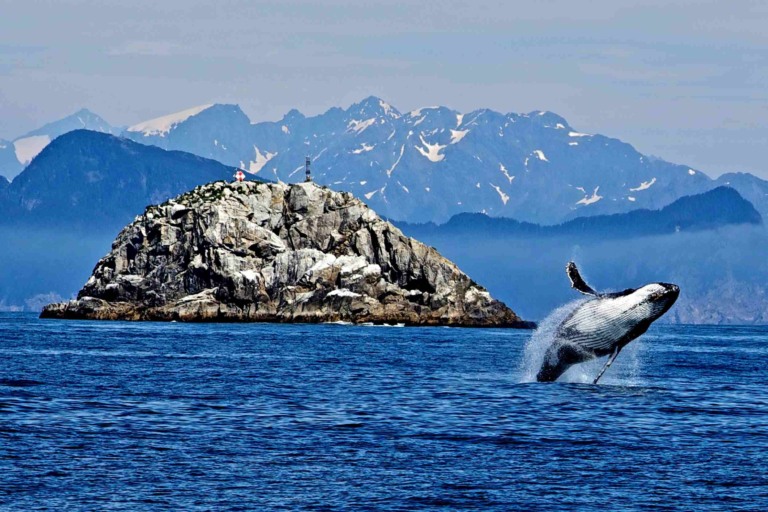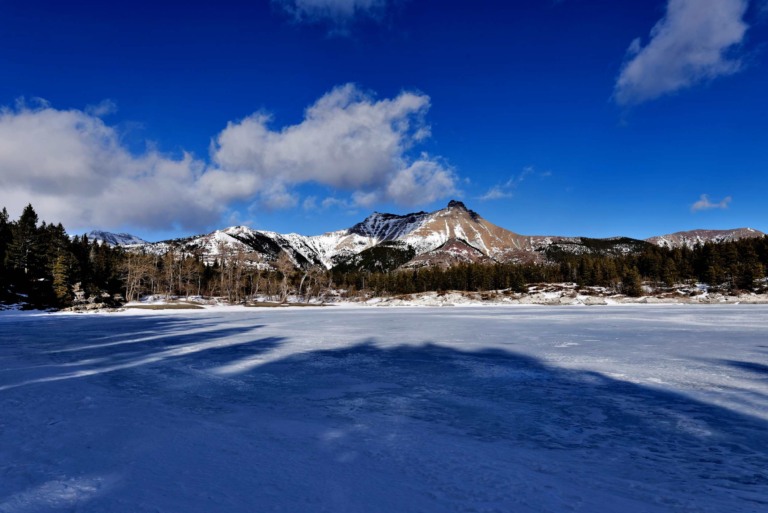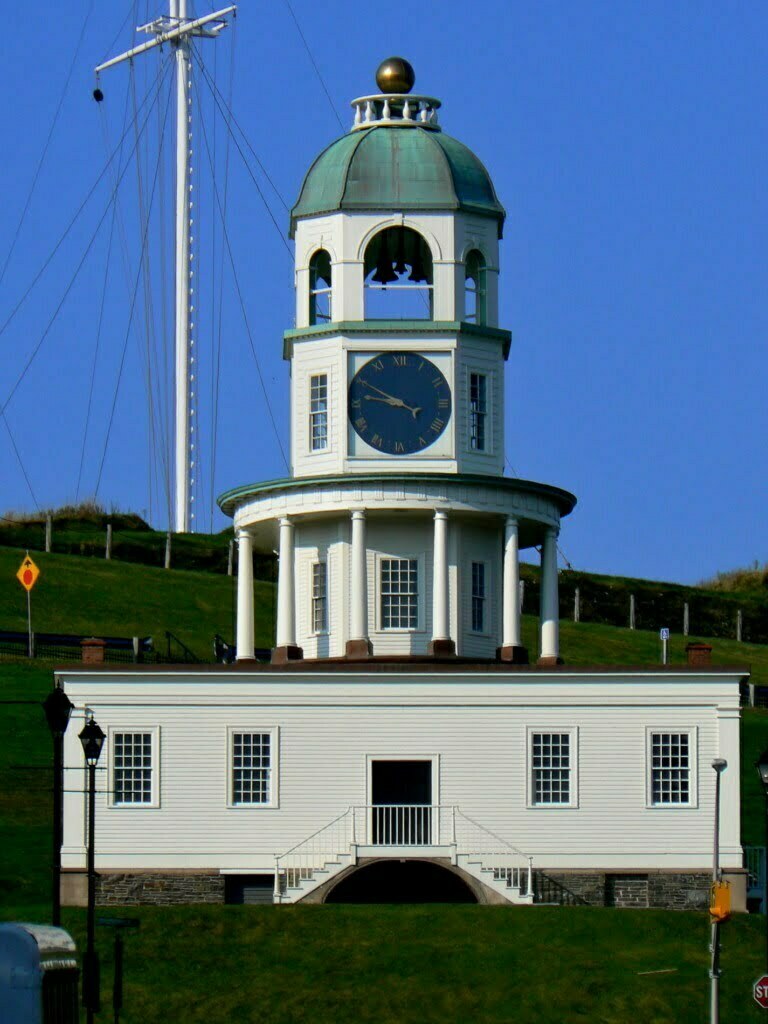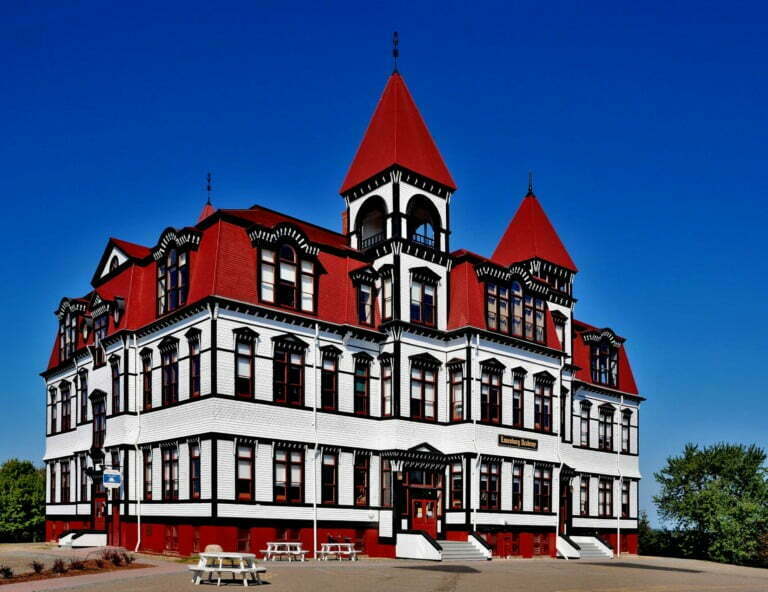The Grand Pre marshland and archaeological sites are in the southern Minas Basin of Nova Scotia, Canada. They are part of a cultural landscape that shows how the Acadians used dykes and the aboiteau wooden sluice system to create farmland in the 17th century.
The planters and the people who live there now have kept it up and made it even better. Over an area of 1,300 ha, the cultural landscape includes a large area of polder farmland and the archaeological remains of the Acadian-built towns of Grand Pre and Hortonville.
Landscape of Grand Pre
The landscape of Grand Pre is a great example of how the first European settlers learned to live on the Atlantic coast of North America. The site is also a memorial to the Acadian way of life and their deportation, which began in 1755 and was called the Grand Derangement. The average difference between high and low tides at the site is 11.6 m.
The Grand-Pré National Historic Site is a park that was made to honor the area of Nova Scotia called Grand-Pré. UNESCO has named Grand-Pré a World Heritage Site. It is the most important part of Canada’s two national historic sites. From 1682 to 1755, it was the main place where Acadians lived.
Grand-Pré remembers how the Acadians were forced to leave their homes during the French and Indian War. The original village of Grand Pré was on a ridge four kilometers from where Wolfville and Hortonville are now.
Grand Pre
Grand-Pré, which in French means “great meadow,” is near the Minas Basin. It was a marsh where the tide came and went. In 1680, Pierre Melanson dit Laverdure and his wife, Marguerite Mius d’Entremont, were the first people to live in the area. They had five little kids. They came from Port-Royal, which is close by. It was the first capital of Acadia, a French colony (Acadie in French).
Pierre Melanson and the other Acadians who moved to Grand-Pré with him built dykes to keep the Minas Basin from flooding. They made good places for their animals to graze and good places to grow crops. Grand-Pré became Acadia’s main source of food. Soon, it was too big for Port-Royal. By the middle of the 18th century, it was the biggest of the many Acadian settlements near the Bay of Fundy and the coast of Nova Scotia, which in Latin means “New Scotland.”
Grand Pré National Historic Site
In 2004, Canada added “Landscape of Grand Pré” to a list of possible World Heritage Sites. It was named a World Heritage Site by UNESCO on June 20, 2012. It has 1,300 hectares (3,200 acres) of polderized marshland. Its archaeological sites have been called an “exceptional example of how the first European settlers adapted to the conditions of the North American Atlantic Coast” and a “memorial to the Acadian way of life and deportation.”
On the 300th anniversary of the arrival of the first Acadians in the area in 1682, the Grand-Pré memorial park was named the “Grand-Pré National Historic Site of Canada” to remember the settlement and later deportation of the Acadians. The Grand-Pré Rural Historic District National Historic Site of Canada was named for the site and the area around it in 1995.
It was given to honor the rural cultural landscape, which has one of the oldest patterns of land use and occupation in Canada that has European roots. Under the provincial Heritage Property Act of 1999, the “Grand Pré Heritage Conservation District” was chosen. It includes the area around the hamlet of Grand-Pré and the Grand-Pré National Historic Site of Canada.
Grand Pre Nova Scotia
- It’s where Sir Robert Borden, Canada’s eighth Prime Minister, was born.
- Tradition in Grand Pré says that the Mi’kmaw figure Lluscap kept a watchful eye on his people from the beautiful Cape Molidon.
- Not only are there Arcadian settlers in Grand Pré, but there are also people with Dutch, English, and Scottish roots who moved there after the Second World War.
Grand Pré FAQs
- Q: What is Grand Pré known for in terms of its scenery? A: It is known for the culture of the Arcadian people and for how innovative they were in farming.
- Q: Where is Grand Pré? A: It is in Nova Scotia, which is in Canada.
- Q: Why is the landscape of Grand Pré important? A: Grand Pré’s landscape has a long history that goes back to when the Arcadian people found peaceful ways to solve problems.
- Q: When and why was the Landscape of Grand Pré named a World Heritage Site? A: In 2012, the Grand Pré landscape was named a World Heritage Site to keep the history of the Arcadian people and their contributions to agriculture alive.
Grand Pre Church
The Grand Pre Church is a memorial to the men and boys who were given the “Deportation Order” on September 5, 1755, and held as prisoners for a month until the ships that would take them away and break up their families arrived.
Governor Lawrence, who was the Lieutenant Governor of Acadia and was based in Halifax, Nova Scotia, had decided on the order. Governor Lawrence thought that the Acadians could cause trouble for the British. But the Acadians didn’t want to do that. They were very peaceful and hard-working people.
Even though the Acadians had sworn allegiance to the British Crown and been told they would never have to fight for the British against France, where they were born, Governor Lawrence told them to fight for the British against France.
John Winslow made the Order of Deportation and gave it to the Acadians when they said no. At the same time that the order was being read, Governor Lawrence arrested the Acadian men who had been sent by their families and neighbors to meet with him in Halifax. Some of the men and boys who were locked up in the church that day would never see their families again.








